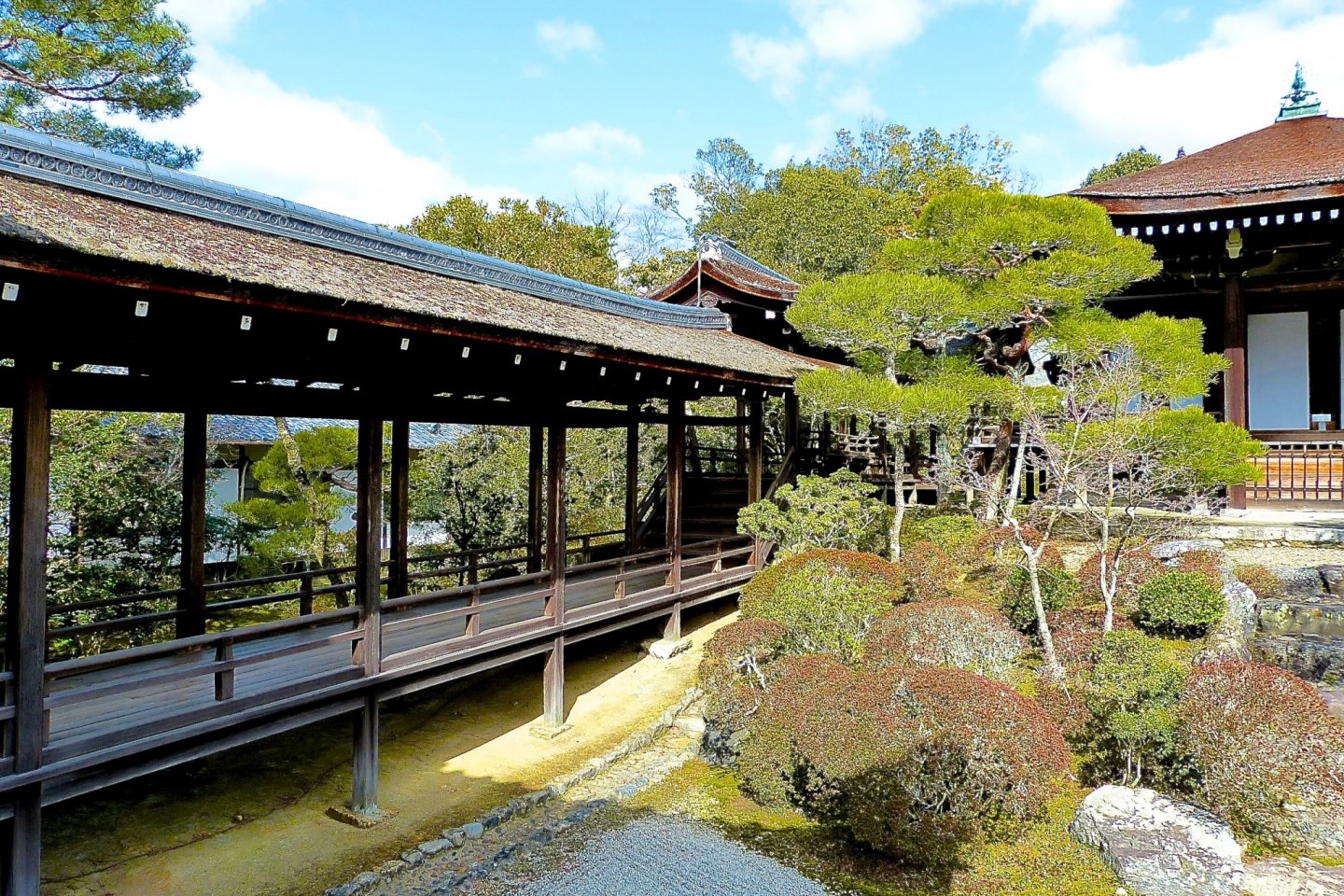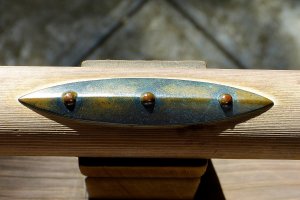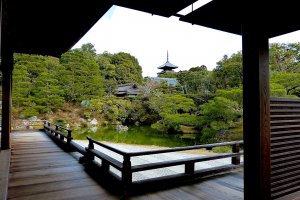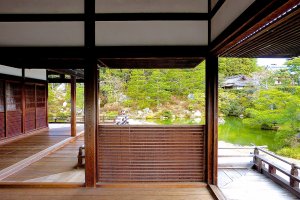Ninna-ji Temple, established in 888, is a balanced blend of aristocratic elegance and Buddhism simplicity. This temple started as a place to pray for the Emperor, and then became a residence of a retired Emperor. Because of its history as an Emperor’s residence, the buildings here feature a sophisticated palace architecture style. The temple continued to have a close relationship to the Imperial Household for generations. For this reason, priests always made great efforts to develop the best gardens for the nobles that lived here. Later, the priests of Ninna-ji Temple spread their knowledge and techniques on garden construction among local temples all over Japan. As a result, the gardens of Ninna-ji Temple became the model for many Japanese gardens.
Strolling route
Walking through the huge Nio-mon Gate, you are on a long, long approach to the red Chu-mon Gate. Pass through Chu-mon and you will find a wide section of the temple that includes Kondo Hall, Shoro Tower, and the Five-story Pagoda. A famous type of very short cherry tree called Omuro Zakura can also be found in this section of the temple. These trees tend to bloom much later than ordinary cherry trees.
But now, let's go back to the first gate, Nio-mon Gate. This temple's amazing corridors are inside Omuro Palace. After coming in through Nio-mon Gate, there is a small gate on the left. That is where you want to go.
Beautiful wooden corridors connecting four main buildings are arranged in a kind of zigzag pattern. If you follow the fixed route, you will see in this order: Shiro-shoin (reception room) and South Garden (the type of aristocratic gardens mentioned above), Shinden Hall (ceremony room), Kuro-shoin (living space) and Reimei-den Hall (prayer chapel) facing North Garden (a typical temple garden). These corridors are not only passageways, but also extensions of each room, where we can enjoy the gardens by stopping and sitting in the middle of the corridor. Depending on where we are, the same garden can look and feel very different. So, please go at a leisurely pace and enjoy yourself here.
South Garden and North Garden
South Garden is wide, and covered almost entirely with white sand containing simple rake lines. Sparse pine trees and cedar trees set off dignified Nio-mon Gate and decorative Chokushi-mon Gate (which was only used by the Emperor’s messengers). North Garden is much more elaborate. A pond, hills, and rocks are arranged together with full, beautiful trees. The Five-story Pagoda can be seen in the distance, creating a striking visual balance with the garden.
In the history of Ninna-ji Temple, a large number of garden specialists (priests of the temple) were developed from within. They studied and worked hard by competing against each other. They visited many places and contributed to the improvement of garden construction at different places in Japan. One of the specialists, Priest Jogen, was invited to Kamakura to design a new garden for the most important temple of the Kamakura Shogunate, Eifuku-ji Temple. This temple, however, no longer exists.



























